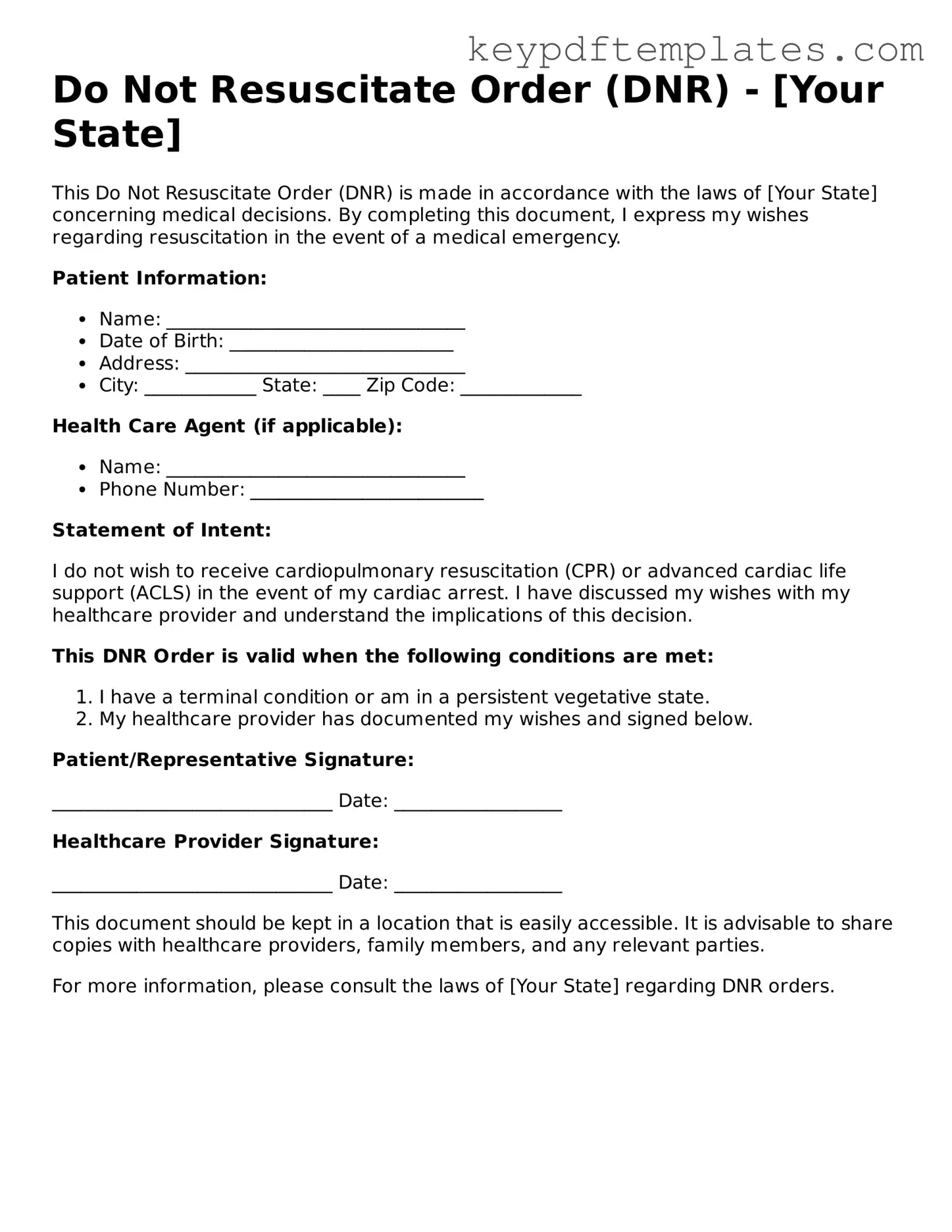Printable Do Not Resuscitate Order Template
A Do Not Resuscitate Order (DNR) is a legal document that instructs medical personnel not to perform cardiopulmonary resuscitation (CPR) in the event of cardiac arrest or respiratory failure. This form reflects an individual's wishes regarding end-of-life care, prioritizing comfort and quality of life over aggressive medical interventions. Understanding the implications and proper use of a DNR is essential for both patients and healthcare providers.
Modify Document Online
